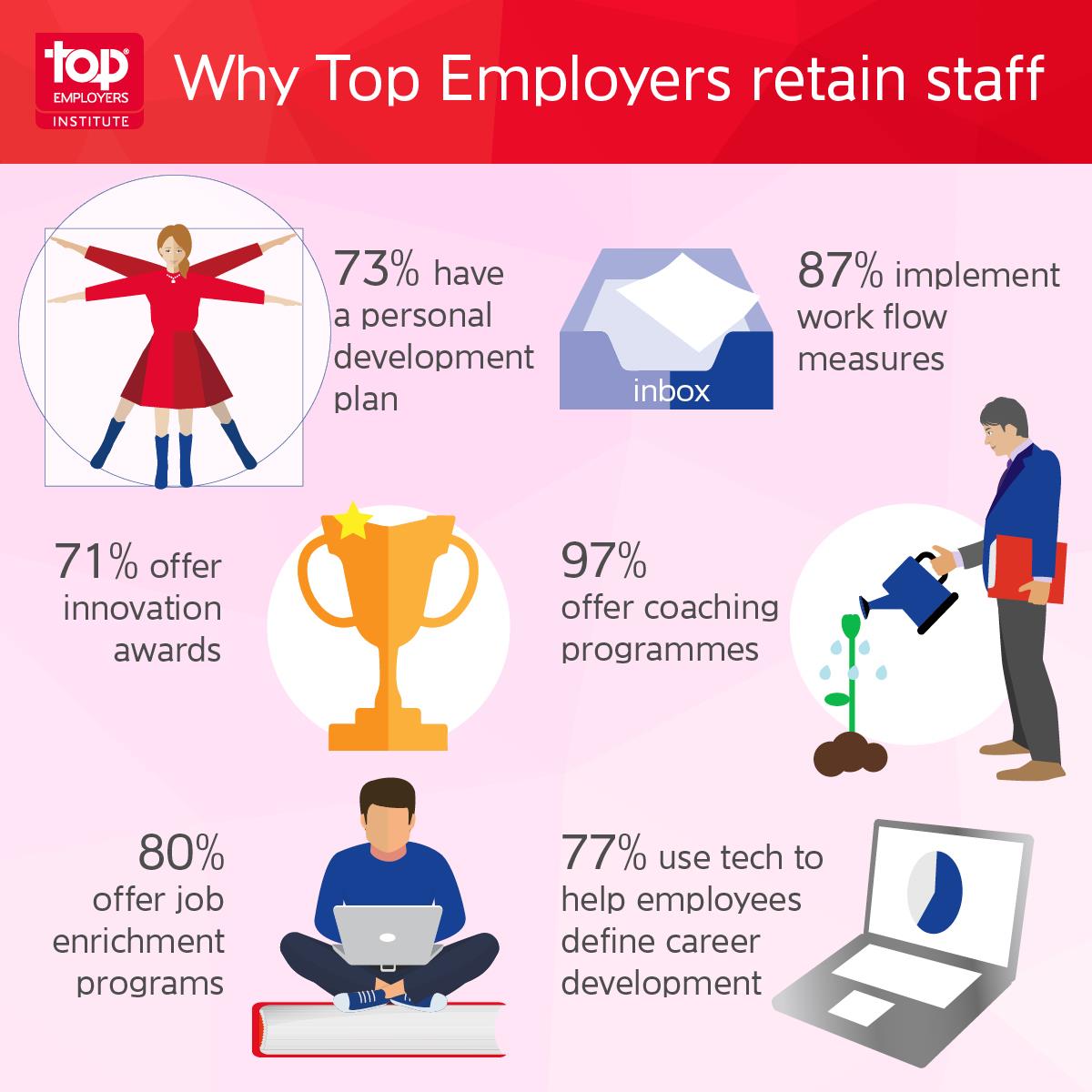How to reduce staff turnover: successful staff retention practices

Sometimes, good people leaving just can’t be helped: there’s an opportunity which isn’t available where they are now, a pay rise you just can’t match, or maybe they simply fancy a change. Other times however, we haven't taken the measures to retain them.
A good employee became good because, for a time at least, the company was satisfying their needs. And they repaid that with effort, performance and a happy disposition. If that same employee then leaves, for reasons other than those which are unavoidable, it’s because the company has stopped satisfying their needs.
Companies wishing to reduce staff turnover should, therefore, be looking to avoid this scenario. Analysis of Top Employers’ participant data suggests they are at the forefront of this.
On average, UK staff turnover rates are around 15 percent per annum*. Certified Top Employers however, (who come from a broad spectrum of industries with hugely varying inherent turnover rates) have an average a turnover rate some 33 percent lower, at around 10% per annum. What it is these companies do which continues to engage, develop, enthuse, satisfy and ultimately retain staff?
We can add rigour to our investigation by introducing a hierarchy of reasons employees leave.

Top Employers retain more staff than the average employer by implementing these measures.
1. Not learning anything new. Of 73 percent of Top Employers, all employees within the company had a Personal Development Plan.
2. Overworked. 87 percent of Certified Top Employers involve line managers in their workforce planning, adding hands-on intelligence about expected outputs and the staffing levels/man-hours required to achieve it.
3. No one inspires, guides or mentors. No one wants to be left floundering at work; wondering if they are going in the right direction and doing the right thing. To combat this, 97 percent of Top Employers offer coaching programmes and 83 percent offer mentoring.
4. Bored. Work can only be fulfilling and absorbing if it’s also challenging. 80 percent of Certified Top Employers offer job enrichment programmes.
5. No recognition of accomplishments. 71 percent of Top Employers offer innovation awards. 90 percent showcase employees’ successes and 91 percent hand over Performance Awards (after all, we all like a pat on the back).
6. Good ideas aren’t listened to or pushed up the ladder. Top Employers operate numerous feed-back and suggestion routes, allowing ideas to reach the ears of senior management.
7. No way to advance internally. 77 percent make use of specific tech to help employees define their own career advancement. 88 percent have their executive leaders mentor their future leaders.
In short, reasons for leaving revolve around personal growth and fulfilment. A sense of doing a good job, getting better at it, and getting noticed for doing it well - though not necessarily financially rewarded.
While losing staff may not always be preventable, there are plenty of things companies can do to address many issues. Many of these measures are minimal in cost and offer a huge return in terms of workflow, morale, productivity, retention and turnover cost.
If you’re interested in decreasing your employee turnover, contact us for information on successful staff retention practices.
*Average of industry estimates.
We assess more than 350 HR practices in our certification process.
Subscribe to our newsletter
Stay on top of the latest HR news & trends from the Top Employers Institute.




